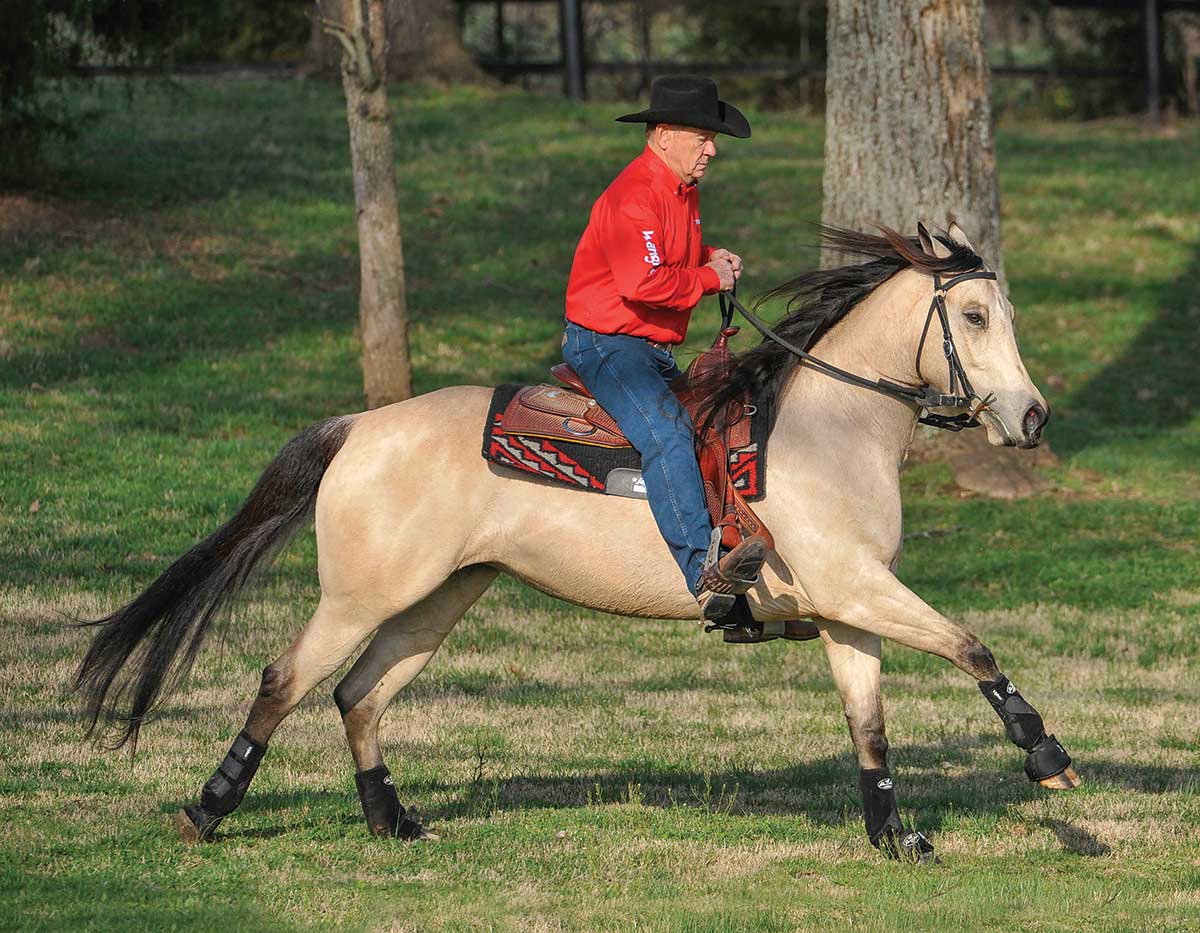
If you’ve ever experienced a runaway horse, you know it’s a terrifying situation. The horse takes control and puts his rider in a dangerous predicament. According to clinicians John Lyons and daughter Brandi Lyons, the best way to deal with this problem is to prevent it—that is, to train your horse to stop 100-percent reliably before the situation ever gets to that point.
We’re going to share a step-by-step method for doing just that. You’ll train your horse in a calm environment, then reinforce the training under more stressful situations.
First, though, John Lyons will provide insights into what leads to running away in the first place.
Don’t ‘Create’ a Runaway
The concept of running away grows incrementally in a horse’s mind, often unbeknownst to you.
“A horse can ‘run away’ with you at a walk, and you might not even realize it,” John explains. “If I’m riding at 3 mph and my horse is going 4 mph, he’s already running away with me. If I ask him to stop and he takes five more steps before doing so, he’s running away with me.
“And, if I go to mount up and he walks off before I ask him to, he’s running away with me. You’ve got to recognize the problem and deal with it before a more dangerous runaway situation develops,” he adds.
John notes that a lazy stop is a clear indication you’re not practicing stopping often enough.
“You might’ve ridden for an hour around your arena, expecting almost nothing from your horse,” he says. “You may’ve asked him to stop only five times in that hour, and maybe never from the jog or lope. That’s not enough practice! If something spooks your horse on the trail and he’s never been taught to stop properly, reliably from a lope, you may well have a runaway situation.”
How much stopping practice is enough?
“Ten practice stops in a session isn’t adequate, and 100 is barely enough,” asserts John. “To prepare for futurities, a world-class reining trainer will spend 1,000 hours of focused, concentrated effort on teaching a horse basic reining maneuvers, including the stop. And, even after 1,000 hours, they’re still working on it in the warm-up pen at the show.”
So, plenty of stopping practice is the key. Now, here’s how to go about it.
If a Bolt Does Happen…
If, despite your best efforts, you ever find yourself aboard a runaway horse, the one-rein stop is your best emergency remedy. Review how-to articles and a video on this basic maneuver at HorseandRider.com.
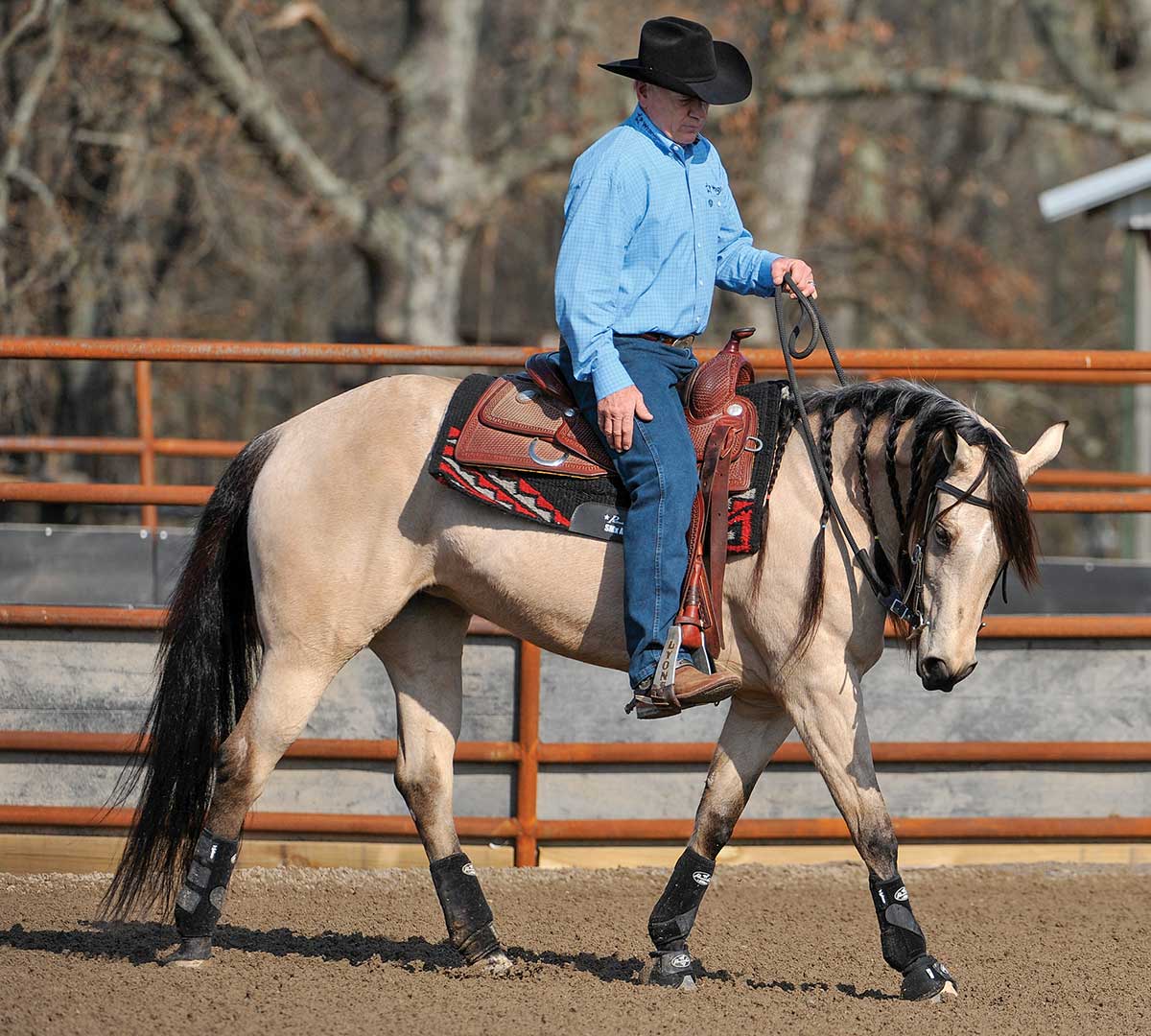
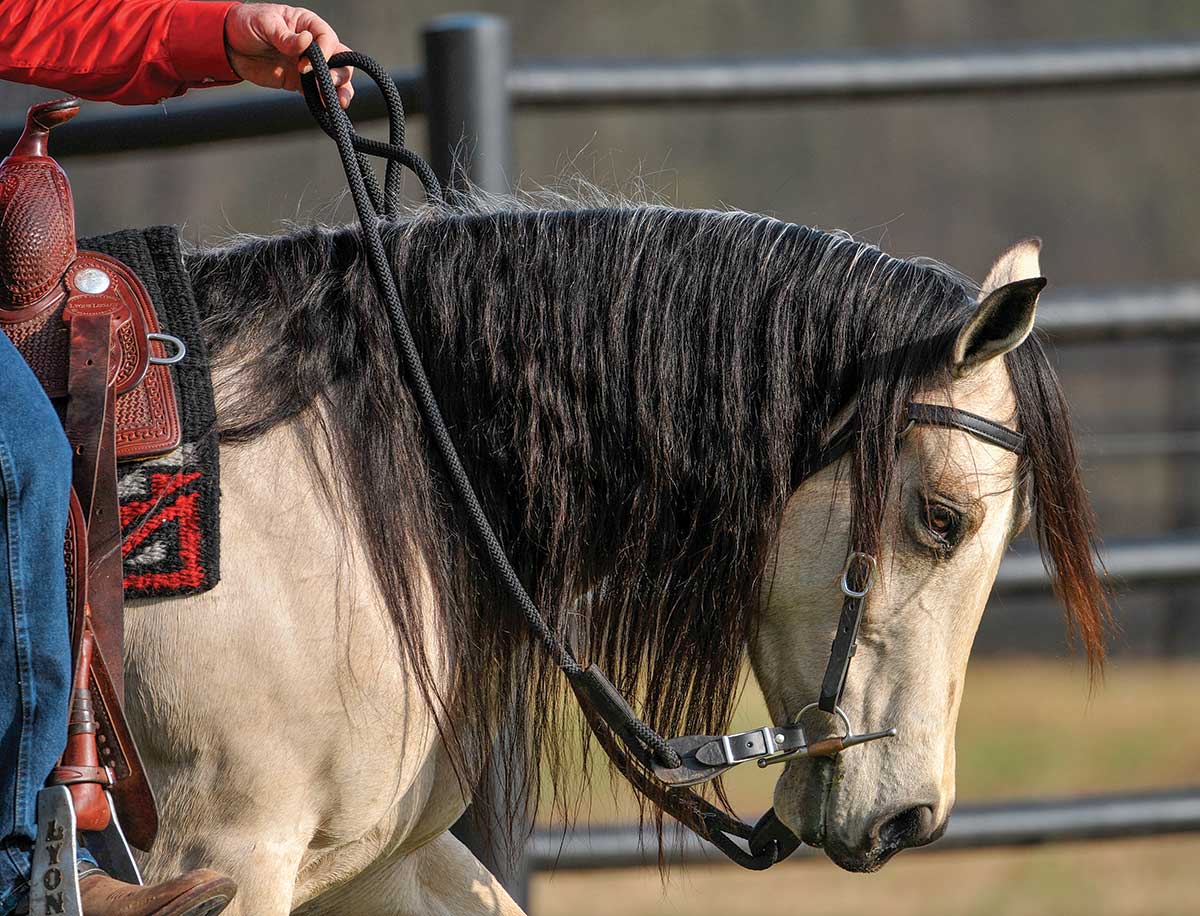
Steps to a Surefire Stop
This basic exercise from Brandi Lyons will reinforce your horse’s stop through balance, compliance, and repetition. Begin your good-stop training in a safe place, such as an arena with secure fencing and good footing. (You’ll eventually graduate to more challenging stopping situations; see “The Basics—Under Pressure,” page 90.)
Outfit your horse in the bit he responds to best (a snaffle is ideal), and warm him up first as you normally do. Then follow these steps.
Step One. Walk your horse forward, then pick up on both reins evenly and ask him to come to a stop, but don’t release the reins when he does stop. Wait until his nose comes in a bit toward his chest. The moment he breaks at the poll like this, release all pressure on the reins.
Then ask him to change his direction and walk forward again, repeating the stop in this manner until he’s soft in the mouth and doesn’t pull on the reins while stopping.
Step Two. Ask him to break at the poll while walking. Do this by keeping your legs on his barrel as you pick up on both reins evenly. He’ll try to stop or slow down at first, but keep holding the reins as you squeeze him forward with your legs until he continues to walk and breaks at the poll.
When he does, release the rein and leg pressure. Then move him forward and ask again. Do this for 15 or 20 minutes or so, until it becomes easy for him and he’s soft in the mouth.
Step Three. Ask him to remain flexed at the poll while walking multiple steps. As he walks forward, pick up your reins and hold as before, asking him to break at the poll. But this time don’t release the pressure as quickly; continue holding it without adding any extra pressure, plus squeeze with your legs to get him to continue on for three to eight strides. Then release all pressure.
Then repeat, eventually asking him to take more and more strides while remaining flexed. This will teach him to frame his body, allowing him to smooth his gaits and respond even better to your cues.
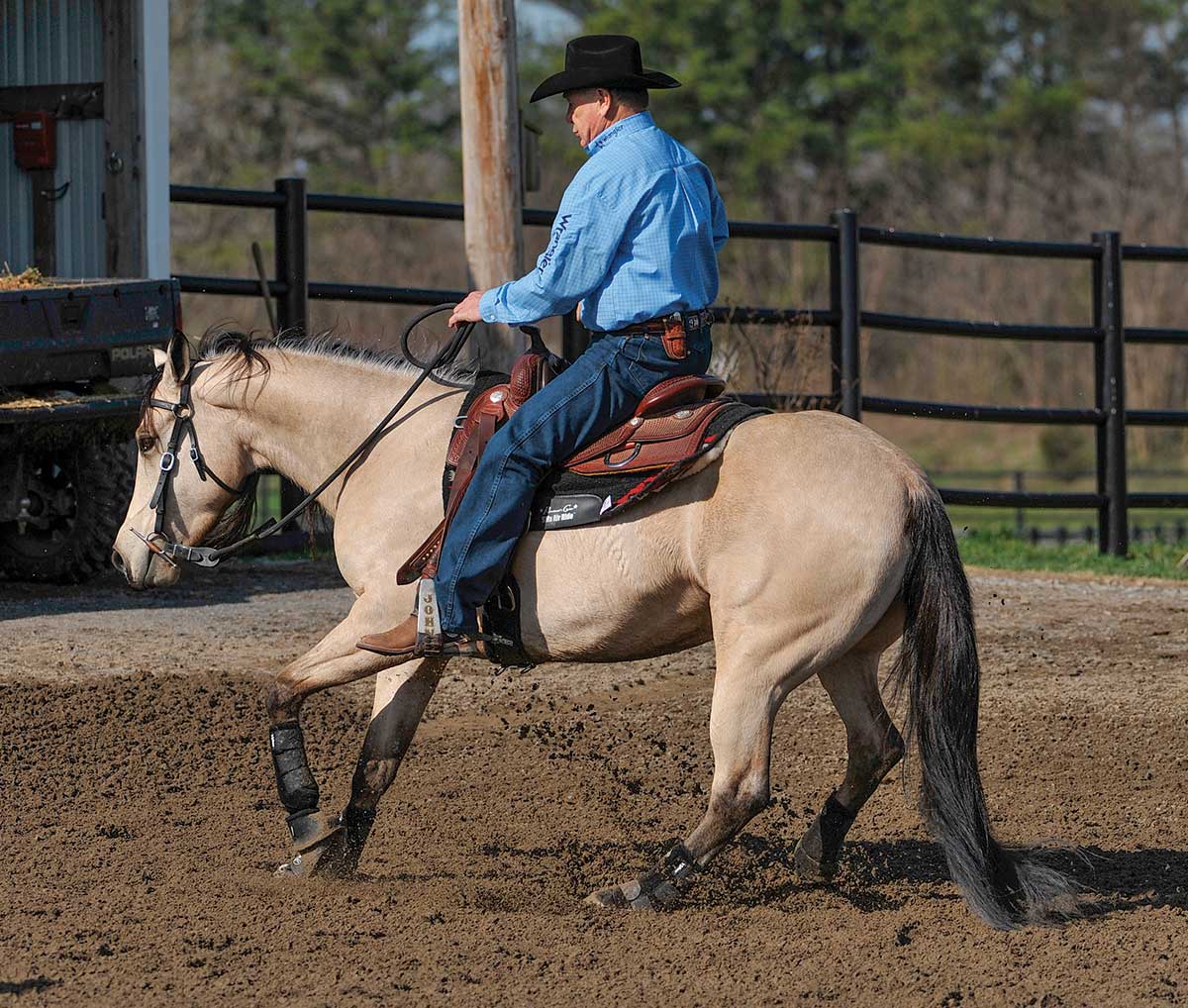
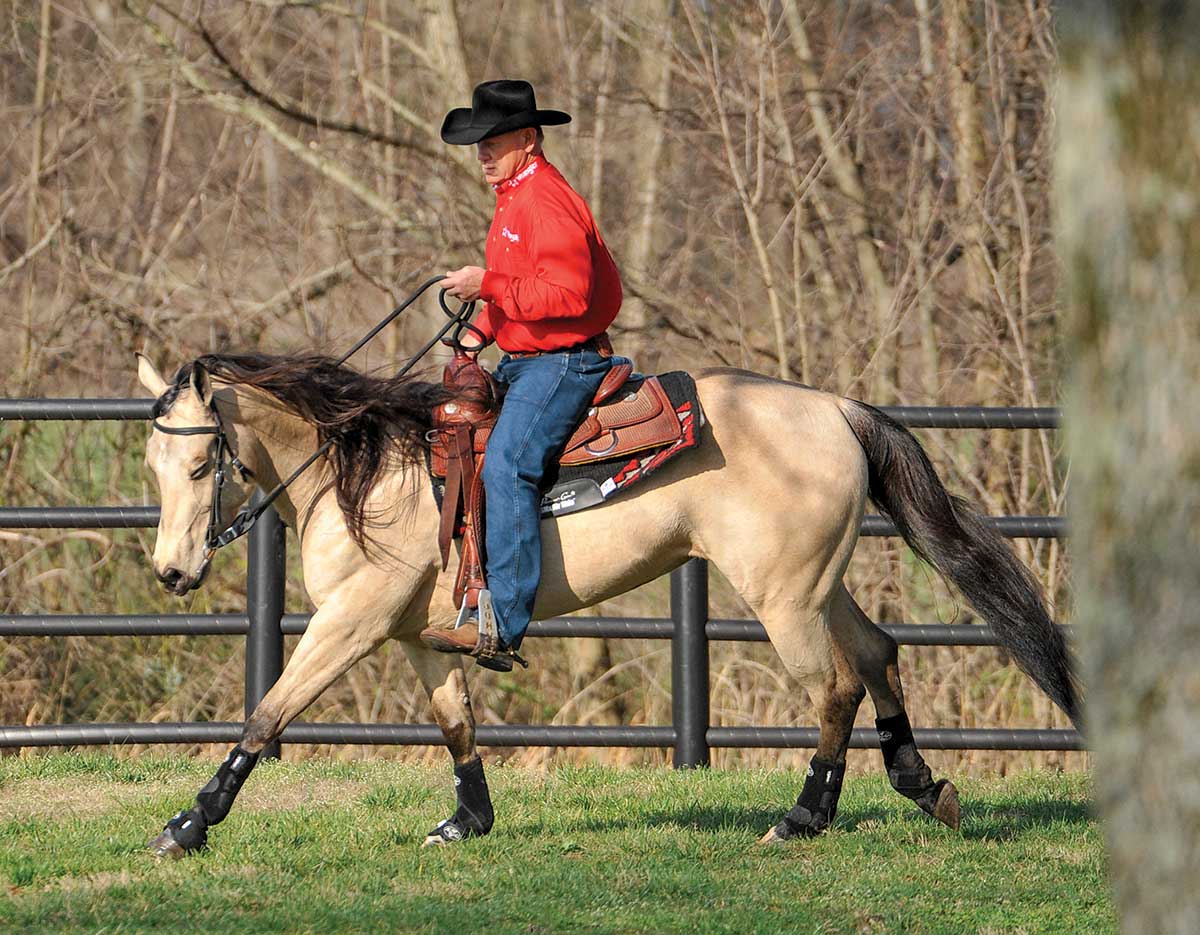
The Basics—Under Pressure
Horses in the act of running away are struggling—and failing—to comprehend slow-down or stop cues. That’s why it’s critical to gradually add complexity to a horse’s training sessions. That way, when the chips are down, your horse will still be able focus on and respond to your cues.
Brandi Lyons explains with this analogy: “If I were to ask you what 2 plus 2 is, you’d easily answer 4. But if I were to throw you out of an airplane from 15,000 feet and then ask you what 2 plus 2 is, you’d have a hard time answering that question under pressure.”
Similarly, when we train a horse we should start in quiet and ideal conditions, then gradually add distractions while encouraging him to continue responding.
“We must train horses to be able to listen to us even if they’re in a strange new environment, there’s another horse nearby, or they’ve become emotional for any reason,” says Brandi. “They must learn to respond to our cues no matter what.”
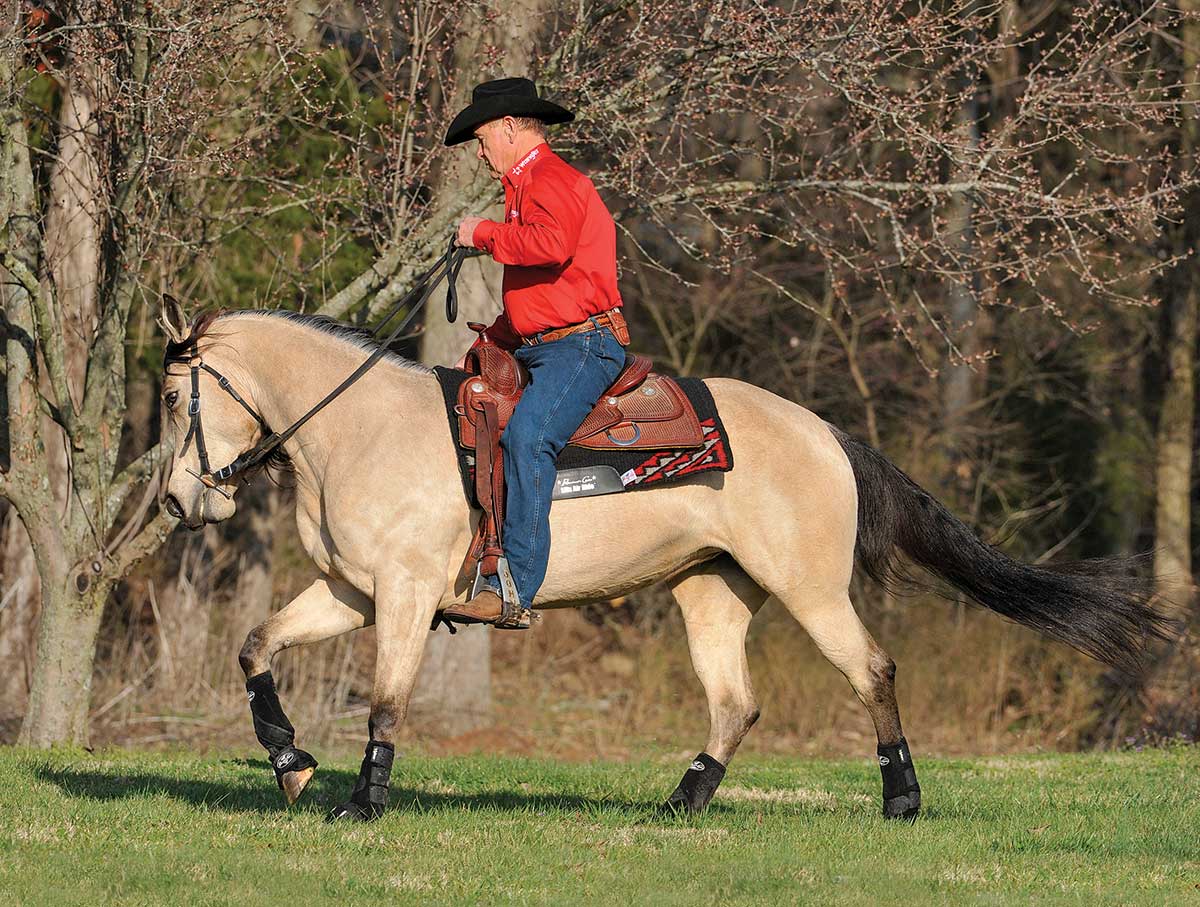
Step Four. Now ask him to stop while he’s in frame (flexed), which gives him the best chance to stop smoothly, correctly, and obediently. This is because when you ask him to hold the flex at the poll while in continuous motion, it raises his withers and allows his hind end to come under him while he stops.
Frame him up for multiple strides at the walk, as before. Then ask him to stop, but don’t add pressure to the reins, just stop riding—that is, take your legs off him and sit deep in your saddle without leaning back. If he stops, release all pressure. If he doesn’t stop immediately, pick up your reins and ask him to back up.
Repeat this exercise until he stops as soon as you release your leg pressure on his sides, with his hind end underneath him and without falling forward on his front end.
Step Five. Increase the level of difficulty by adding emotion—via speed and distractions—to this training. Start by riding Steps One through Four at a trot. Then practice them while loping. Then add a distraction, such as having another horse and rider working in the arena with you, working your horse in an unfamiliar arena, or working him in an open field.
No matter which type of distraction you’re working with, don’t lose focus on your exercise. Remain an active rider! Do this over multiple sessions until you’re fully satisfied with his stop. Then remember to reinforce the training regularly during your riding sessions, and you’ll always have a horse that stops on command.






